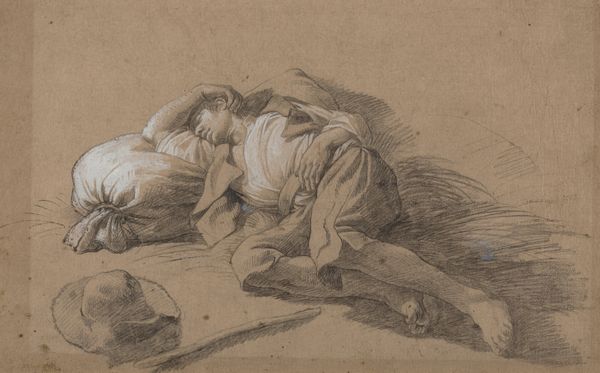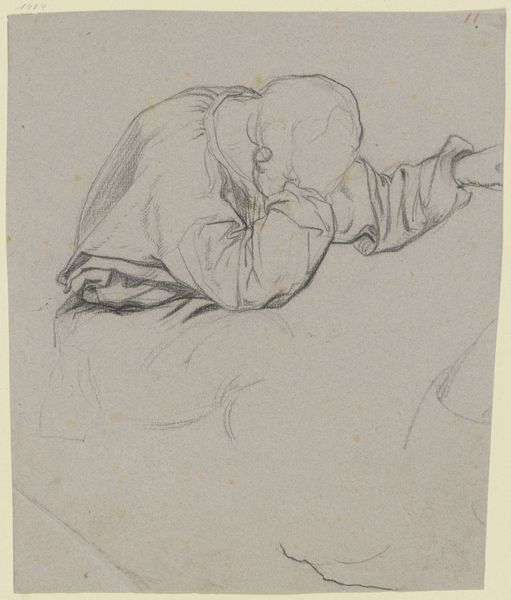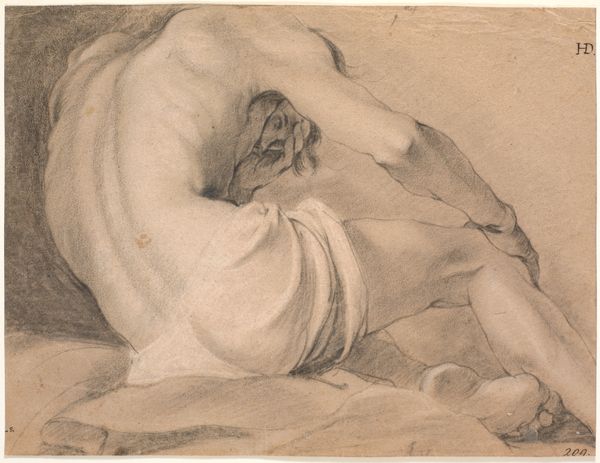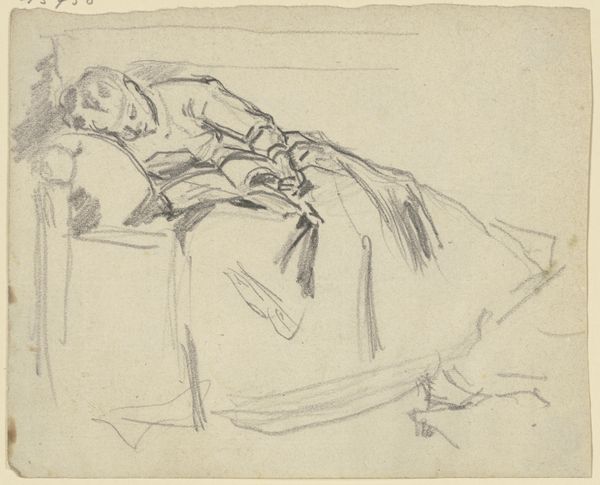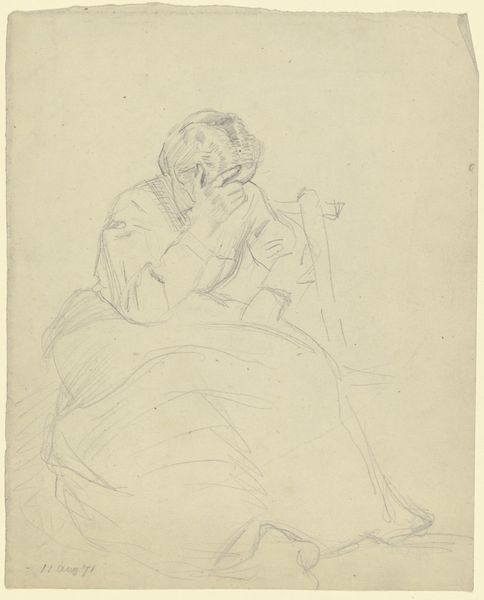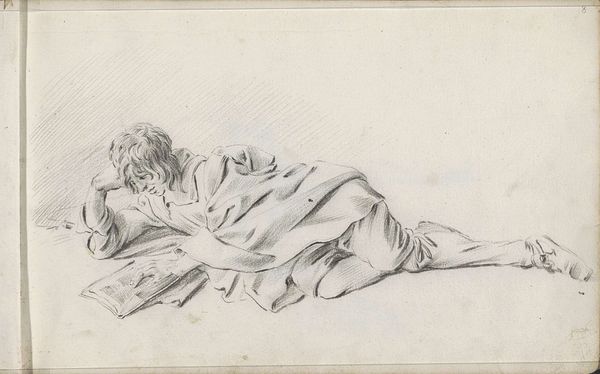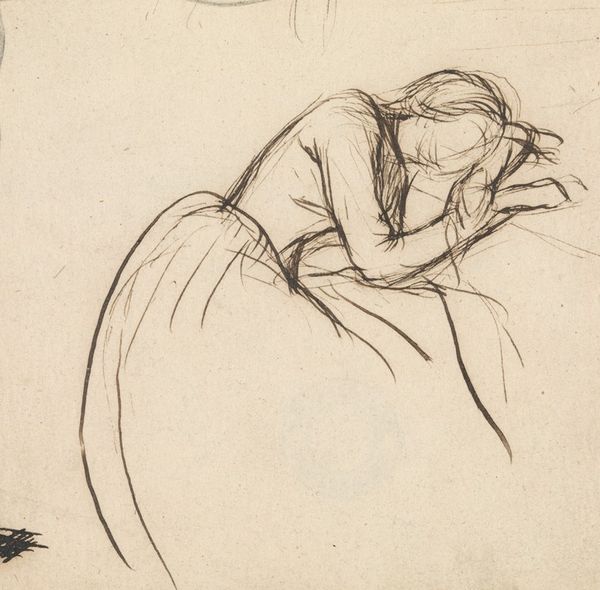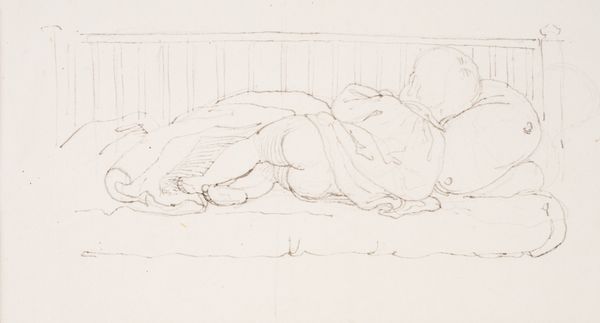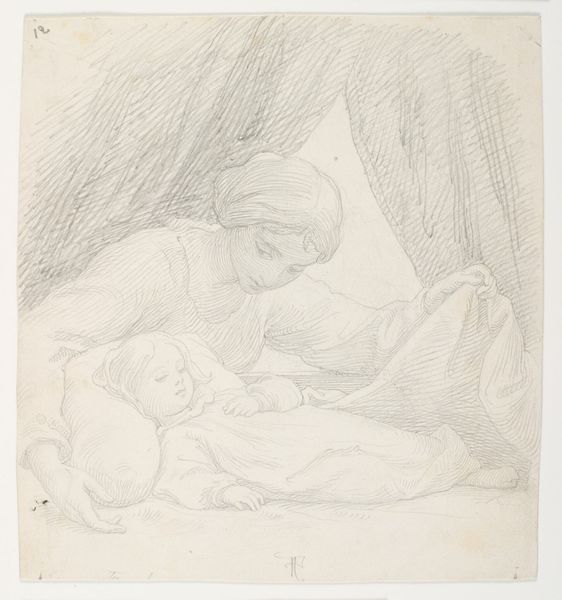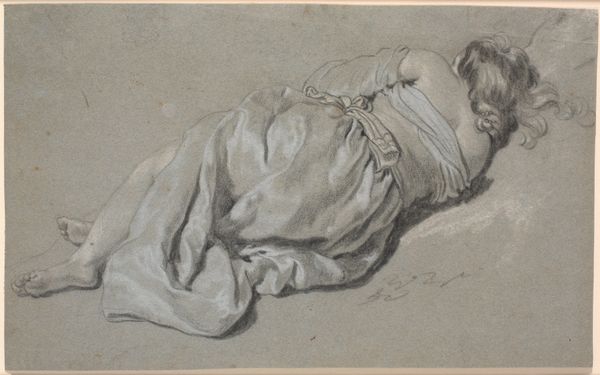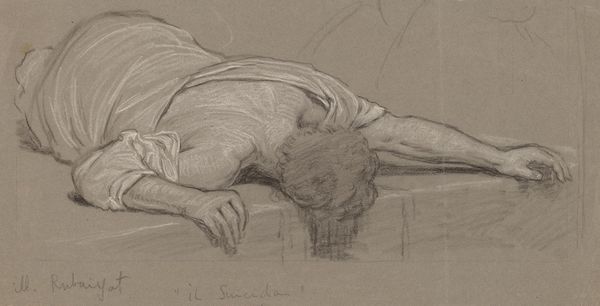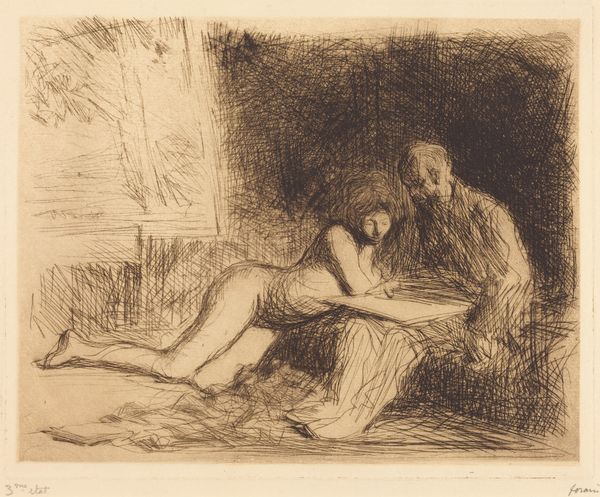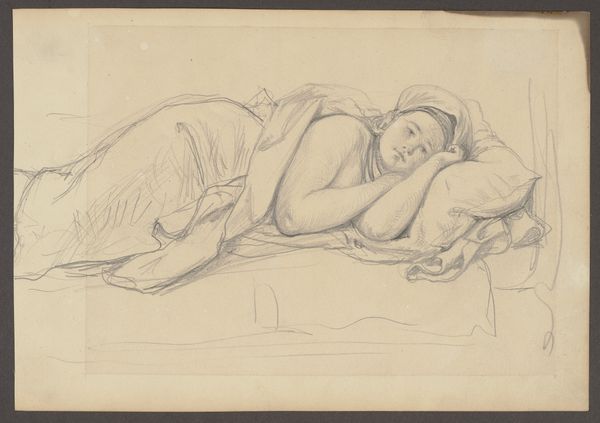
Dimensions: 211 mm (height) x 264 mm (width) (bladmaal)
Here is a drawing of a woman sitting curled up, made by Johann Heinrich Füssli, likely towards the end of the 18th century. Füssli was operating in a European art world that was beginning to question traditional representations of women. This piece captures a figure in a state of inward reflection. Curled up, she seems to retreat into herself, a pose that defies the conventional depiction of women as passive objects of beauty. Instead, there is a sense of internal depth, inviting a dialogue between the observer and the observed about the complexities of female identity during that time. Fuselli once said: "One of the most unexplored regions of art is the field of dreams”. This idea of exploring the subconscious is palpable here. The drawing encourages us to consider the emotional and psychological dimensions of the woman. It hints at the societal pressures and personal experiences that might shape a woman's inner world. The artwork, in its poignant depiction of introspection, reflects the emergence of alternative narratives about women, as active agents in their own stories.
Comments
statensmuseumforkunst almost 2 years ago
⋮
Füssli’s drawing has no specific meaning or content, shows no specific scene. No particular story is being related here, nor does the scene refer to a character known from literature. The female figure in the drawing primarily refers to itself, the forms determining the picture’s content. The drawing's figure The figure’s curling position, closed in upon itself; the curve of the neck; the sharp, angular abstraction of the face; the hair flowing chaotically across the pillow; the limply dangling hand; the sharply pointed foot - all this is combined to form an impression of restlessness and tension, creating an image of a woman who appears to be in a traumatic state. Michelangelo as role model The picture points back to Michelangelo (1475-1564), Füssli’s great role model. When the stories are peeled away, only the nameless figure is left, says the art historian Julius Lange (1838-1896) about the essence of Michelangelo’s figures. The figures become real, come into their own through their physical, bodily expressions. Like so many of Füssli’s works, the drawing’s abstract, formal statement about human existence can also be viewed as forestalling modernism and its permanent awareness of crisis.
Join the conversation
Join millions of artists and users on Artera today and experience the ultimate creative platform.
